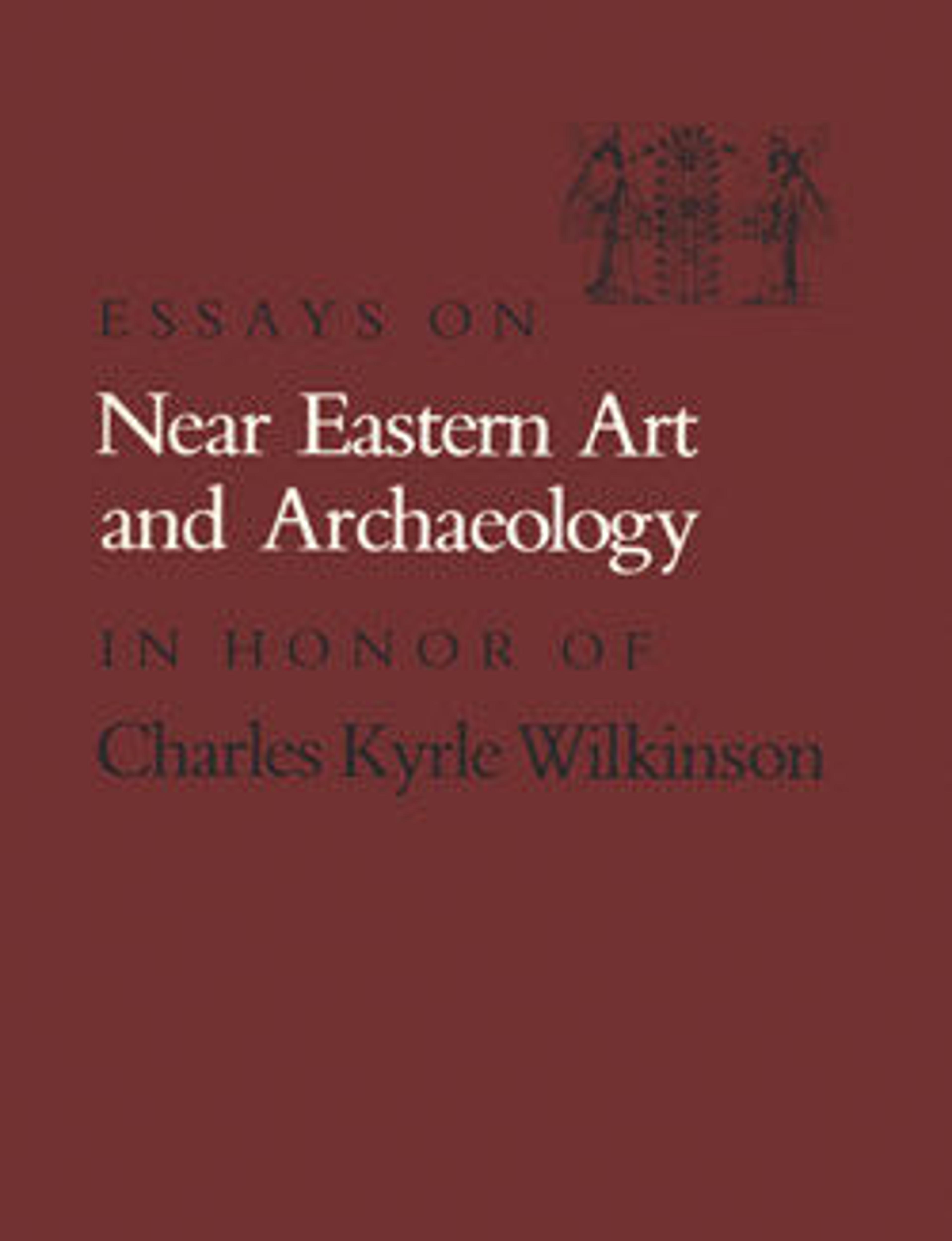Relief panel
In most rooms of the Northwest Palace at Nimrud (ancient Kalhu), the reliefs showing magical figures had a single, overlifesize pictorial register, with the inscription in the center cutting across the imagery. The relief shown here, however, in which two registers of imagery are separated by a central band containing the inscription, is a type found only in certain rooms of the palace. It is not clear why the design is different in these rooms, although their position in the palace suggests they had special ritual significance. One theory is that the reliefs were divided in order to multiply the number of magical protective images in these special spaces; another theory is that, because of their importance, these rooms were decorated first and the artistic plan subsequently changed. The stone of the reliefs in these rooms often has a more translucent and mottled appearance than in other parts of the palace, although whether this distinction was the result of deliberate selection or a chance consequence of quarrying and shipments is unclear.
Each register of imagery shows a pair of supernatural figures flanking a stylized "sacred tree." Further sacred trees can be seen to the left, and similar imagery continued around the room from which this slab came. The tree is thought to represent the prosperity and agricultural abundance of Assyria, and perhaps on one level the state itself. The supernatural figures are protective, and similar to those shown at larger scale throughout the palace. The gesture performed by the bird-headed figures with bucket and cone has been much discussed. One suggestion is that it symbolizes the fertilization of the land through the imagery of artificial date-palm fertilization, in which male date-spathes are used to fertilize female plants. The Assyrian term for the cone, however, seems to be "purifier," and it is therefore likely that the symbolism has as much or more to do with magical protection.
Figures such as these continued to be depicted in later Assyrian palaces, though less frequently. Only in the Northwest Palace do they form such a dominant feature of the relief program. Also unique to the Northwest Palace is the so-called Standard Inscription that ran across the middle of every relief. The inscription, carved in cuneiform script and written in the Assyrian dialect of the Akkadian language, lists the achievements of Ashurnasirpal II (r. 883–859 B.C.), the builder of the palace. After giving his ancestry and royal titles, the Standard Inscription describes Ashurnasirpal’s successful military campaigns to east and west and his building works at Nimrud, most importantly the construction of the palace itself. Like the imagery, the repeating inscription is thought to have had a magical function, contributing to the divine protection of the king and the palace.
Each register of imagery shows a pair of supernatural figures flanking a stylized "sacred tree." Further sacred trees can be seen to the left, and similar imagery continued around the room from which this slab came. The tree is thought to represent the prosperity and agricultural abundance of Assyria, and perhaps on one level the state itself. The supernatural figures are protective, and similar to those shown at larger scale throughout the palace. The gesture performed by the bird-headed figures with bucket and cone has been much discussed. One suggestion is that it symbolizes the fertilization of the land through the imagery of artificial date-palm fertilization, in which male date-spathes are used to fertilize female plants. The Assyrian term for the cone, however, seems to be "purifier," and it is therefore likely that the symbolism has as much or more to do with magical protection.
Figures such as these continued to be depicted in later Assyrian palaces, though less frequently. Only in the Northwest Palace do they form such a dominant feature of the relief program. Also unique to the Northwest Palace is the so-called Standard Inscription that ran across the middle of every relief. The inscription, carved in cuneiform script and written in the Assyrian dialect of the Akkadian language, lists the achievements of Ashurnasirpal II (r. 883–859 B.C.), the builder of the palace. After giving his ancestry and royal titles, the Standard Inscription describes Ashurnasirpal’s successful military campaigns to east and west and his building works at Nimrud, most importantly the construction of the palace itself. Like the imagery, the repeating inscription is thought to have had a magical function, contributing to the divine protection of the king and the palace.
Artwork Details
- Title:Relief panel
- Period:Neo-Assyrian
- Date:ca. 883–859 BCE
- Geography:Mesopotamia, Nimrud (ancient Kalhu)
- Culture:Assyrian
- Medium:Gypsum alabaster
- Dimensions:90 1/2 x 84 1/2 x 6 in. (229.9 x 214.6 x 15.2 cm)
- Credit Line:Gift of John D. Rockefeller Jr., 1932
- Object Number:32.143.3
- Curatorial Department: Ancient West Asian Art
More Artwork
Research Resources
The Met provides unparalleled resources for research and welcomes an international community of students and scholars. The Met's Open Access API is where creators and researchers can connect to the The Met collection. Open Access data and public domain images are available for unrestricted commercial and noncommercial use without permission or fee.
To request images under copyright and other restrictions, please use this Image Request form.
Feedback
We continue to research and examine historical and cultural context for objects in The Met collection. If you have comments or questions about this object record, please contact us using the form below. The Museum looks forward to receiving your comments.
